ISE 2018: Brief Overview
ISE 2018 – Integrated Systems Europe – “Audio-Video” Exhibition in Amsterdam is growing year-to-year and attracts more and more participants. In 2018 ISE set a new record: 15 exhibition halls, 1200 exhibitors, 80 thousand visitors. Most importantly, the technologies on display are the newest, most modern and even futuristic.
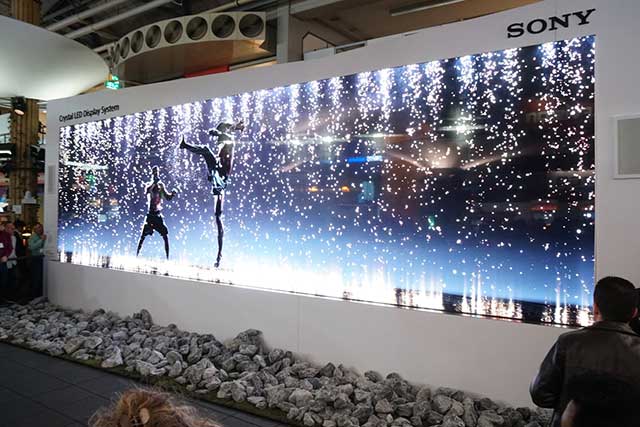
Sony Crystal LED screen 8Kx2K (7680x2160)
Predictably, the industry giants bring to the Exhibition something to excite and amaze. For example, Samsung lures visitors to the stand with the help of the new super fine pitch LED screen product called The Wall. The pixel pitch on LED screens continues to shrink, getting closer and closer to TV screen density. Most probably, the Korean designers and market analysts are showing us our future where all walls will turn into talking screens.
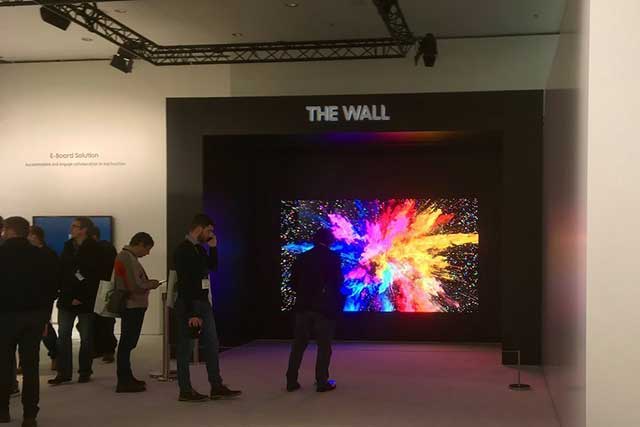
Samsung “The Wall” LED screen at ISE 2018
At present, Samsung Walls can be used in new cinema theaters where projection screens are replaced by LED technology. On a large wide screen the 2 or 2.5 mm pixel pitch offers the same effect as the projection screen quality. But the LED image quality is better than projection image, it is more saturated and sharp.
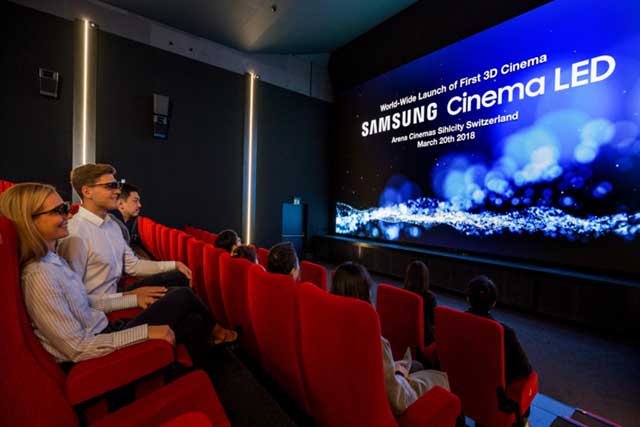
Samsung 3D Cinema LED screen
Naturally, companies continue to compete in the ultra tight pixel pitch area. Many companies have already passed the psychologically important 1 mm barrier. For example, the US-Chinese company Leyard is leading with the 0.7 mm pitch, followed closely by Chinese Liantronics with pixel pitch of 0.8 mm and Deepsky from Hong Kong that is offering 0.9 mm pitch. Phillips that barely survived the LED light bulb revolution is also trying to enter the fight for best microLEDs. In fact, the Samsung Wall has the 0.84 mm pitch. When you look at all these models, the eye fails to notice the difference, so these numbers are nothing more than the marketing trick. Naturally, this war for tight pitch is based on technical competition: the tighter the pitch the more complex is the heat dissipation issue, and higher operational temperature leads to lower life of LEDs, etc.
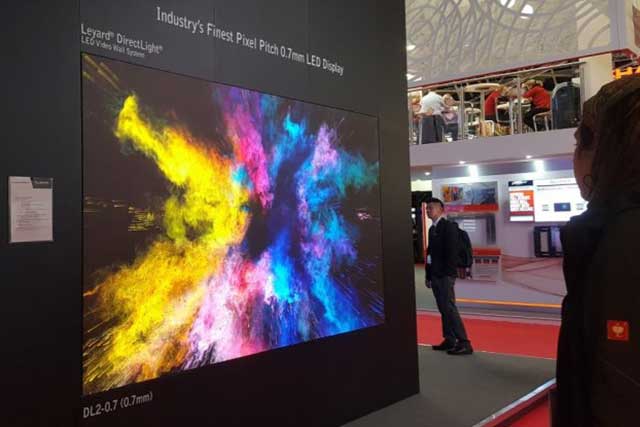
Leyard LED screen with pixel pitch 0.7 mm at ISE 2018
Following the principle “Make Little Smaller” the Japanese Mitsubishi offered its own version of video walls with the reduced gap (nearly unnoticeable for the eye) between LCD screens. The gap is 1 mm horizontally and 0.5 mm vertically. Such solutions are ideal for the command centers filled with numerous screens. In the past, the Belgium-based Barco dominated in supplying screens for such centers, but no longer.
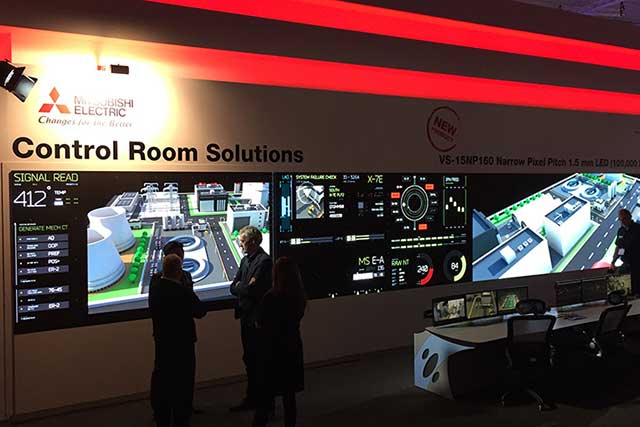
Mitsubishi Direct View LED screen with pixel pitch 1.5 mm
The fight for quality and image density cannot be conducted without improvements and complications in the control systems. This is where the new SoC (System-on-Chip) approach is gaining more and more importance. In SoC, the microprocessor turns into a specialized computer and combines functions of a PC, player and mixer on one integrated board. Just a few years ago each stand-alone LED screen was controlled by a computer (cumbersome and expensive). The computer was replaced by a more compact player. Today, the comprehensive control SoC system is included in LED cabinets, does not require additional space, consumes very little energy and allows to remotely control the screen, even high-resolution screen. For the past year the number of SoC systems has been fast growing.
The LED IC-driver manufacturers are conducting similarly vicious fight for the market. For example, by the opening of ISE the well-known Taiwanese company Macroblock manufactured a new driver series MBI5359, specially for high-resolution screens with high-density pixels. Apart from good contrast dynamic imaging, high-integration 48-channel 16-bit grey scale IC-drivers boast the new energy saving (up to 75%) function when the screen operates in slide-mode.
Pitch density grows together with resolution. A few years ago everyone talked of the revolutionary 4k resolution. Today even 8K is commonplace. And some companies are working on the next barrier of 16K resolution. Mostly this concerns the OLED screens that were represented at ISE in enormous numbers. Naturally, only such giants as Barco, Panasonic, Mitsubishi and others can compete in this category right now.
The ever-sceptical experts continue to argue about the commercial aspect of augmented reality, VR and 3D technology. One fact is indisputable though: the sales in this area continue to grow in spite of the world crisis. The market analysts agree that the sales of VR products will double for the next several years. Experts predict that enhanced reality products will soon be introduced in the educational and health systems of several countries.
There are exhibitions that you have to visit for the sake of prestige, some – for the sake of enjoyment. ISE is one of the few exhibitions that showcases our future! Something one cannot miss to see.





